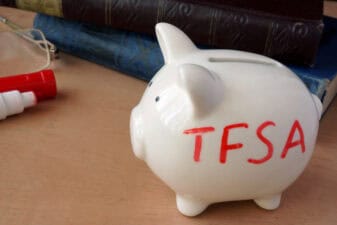Investing in the stock market can be exciting, but for new investors, it can also be overwhelming. While the opportunity to build wealth over time is undeniable, there are common pitfalls that can set you back. Here are the top five mistakes new investors should avoid.
1. Taking too much risk
It’s natural to feel concerned about losing money when you first start investing. However, a common mistake many new investors make is taking on more risk than they can handle. While the potential for high returns is tempting, stock investing can lead to significant losses, especially if you’re borrowing to invest or betting too aggressively on risky stocks.
To avoid this, refrain from using borrowed money to invest. Instead, begin with companies you are familiar with and have confidence in. For instance, the Canadian banking sector is a stable foundation, with large banks like Toronto-Dominion Bank and Bank of Nova Scotia (TSX:BNS) offering reasonable value and attractive dividend yields today. Diversify your investments across various sectors, and maintain an appropriate mix of stocks, bonds, and cash to safeguard against market downturns.
2. Not investing enough
Many Canadians hesitate to invest adequately due to the fear of losing money. However, failing to invest enough can be just as harmful. Inflation erodes your purchasing power over time, and without regular investments, your financial future may be at risk.
Start by committing to invest a percentage of your income, such as 10%, or whatever fits within your budget. The key is consistency – making regular investments, no matter the amount. Although building a stock portfolio piece by piece may initially make a concentrated “portfolio”, confidence in the businesses you own will help you weather inevitable market corrections.
For example, Bank of Nova Scotia has faced challenges recently, resulting in a stagnant dividend for two years. Despite this, the bank’s dividend payout ratio remains sustainable, and its stock is relatively cheap. This presents an opportunity for investors willing to hold through temporary dips, making it a good candidate for those seeking income generation.
3. Lack of diversification
Diversification is the foundation of a balanced investment strategy. Simply put, it’s about spreading your investments across different asset classes to reduce risk.
A well-diversified portfolio typically includes cash, fixed-income investments (like bonds), and stocks. One simple guideline financial planners often use is the “Rule of 110,” which helps determine the right allocation between stocks and bonds based on your age. For example, if you’re 30 years old, subtract that from 110 to find that approximately 80% of your portfolio should be in stocks, with the remaining 20% in bonds. See Motley Fool on asset allocation
Exchange Traded Funds (ETFs) are an easy way to diversify, offering exposure to a broad range of assets. By investing in an ETF, you can achieve global diversification without having to pick individual stocks, thus reducing your exposure to any single company risk.
4. Misunderstanding risk
Many new investors confuse volatility with risk. While market fluctuations can be unsettling, true risk is the potential for permanent loss of capital. In other words, volatility is a natural part of the market, but the real danger comes from losing money that you can’t recover.
To mitigate risk, it’s crucial to maintain a diversified portfolio and rebalance it as needed. If you’re unsure where to begin, consider low-cost, diversified ETFs. For example, an ETF like the iShares Core Growth ETF Portfolio provides an 80% stock and 20% bond allocation, offering broad exposure across regions and asset classes. Plus, it automatically rebalances itself, ensuring you maintain the desired risk level.
5. Chasing trends and emotional investing
The stock market is often driven by emotions like fear and greed. New investors, particularly those who fall victim to “FOMO” (fear of missing out), can get caught up in chasing hot trends or jumping on the latest “stock craze,” which are often short-lived and risky.
This emotional approach often leads to buying high and selling low – exactly the opposite of a successful investment strategy. To avoid this, keep a long-term perspective and resist the urge to chase short-term trends. Focus on the fundamentals of the companies you’re investing in and stick to a disciplined strategy.









